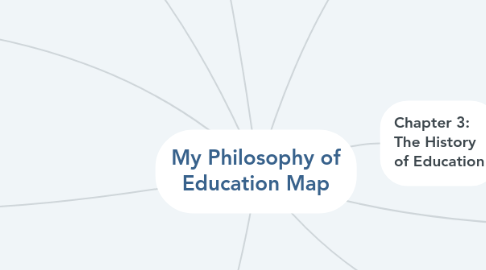
1. Chapter 6: Schools as Oranizations
1.1. Identify and describe the elements of change within 1. school processes and 2. school cultures.
1.1.1. 1.
1.2. Identify major stakeholders in YOUR district by name (1. Federal level - senators and House of Representative; local level - senators and house of representatives, state superintendent, representative on state school board, local superintendent, and all members of local school board)
1.2.1. Senators: Doug Jones and Richard Shelby
1.2.2. Hartselle House of Representative: Ed Henry
1.2.3. State Superintendent: Ed Richardson
1.2.4. Hartselle Superintendent: Dr. Dee Dee Jones
1.2.5. Hartselle Board of Education:Mrs. Venita Jones Dr. James Joy Mr. Daxton Maze Ms. Amy Pace Mr. Randy Sparkman
2. Chapter 7: Curriculum, Pedagogy, and the Transmission of Knowledge
2.1. 1. Explain a curriculum theory which you advocate (humanist, social efficiency, developmentalist, or social meliorist). 2. Identify and describe the two dominant traditions of teaching.
2.2. 1.social efficiency- not everyone learns the same so teaching should be done for the same. It should be individualized and flexable.
2.3. 2.
3. Chapter 8: Equality of Opportunity and Educational Outcomes
3.1. Describe how class, race, and gender each impact educational outcomes.
3.1.1. class: the parental income may cause a child to lack in school resources like books and books and may have a problem finishing school and going to college
3.1.2. race: minorities do not receive the same educational opportunities as white, and their rewards for educational attainment are significantly less
3.1.3. gender: teacher might place unrealistic pressure on girls than on boys
3.2. What were the two responses to the Coleman Study from 1982?
3.2.1. #1 The achievement gap between public and private isn't as significant as what Coleman thought.
3.2.2. #2 the racial and socioeconomic composition of a school has a greater effect on student achievement than an individual's race and class.
4. Chapter 9: Explanations of Educational Inequality
4.1. Explain at least two types of cultural differences theory (page 424-427) Describe at least four school-centered (not student-centered) explanations for educational inequality.
5. Chapter 10: Educational Reform and School Improvement
5.1. 1. Describe two school-based reforms (school-based, school-business partnerships, privatization, school-to-work programs, teacher education or teacher quality)
5.1.1. School-to-Work Programs. Their intent is to extend what had been a vocational emphasis to non-college-bound student regarding skills needed for successful employment and and to stress the importance of work-based learning.
5.1.2. School-Business Partnership. Businesses that will come in and help give scholarships and help build training and management skills.
5.2. 2. Describe at least two societal, economic, community, or political reforms.
6. Chapter 2: Politics of Education
6.1. Purposes of Ed.
6.1.1. 1. Intellectual- to teach the basic skills and to think more.
6.1.2. 2. Political- to prepare students to provide in the political order
6.1.3. 3. Social- to socialized children
6.1.4. 4. Economic- to prepare students for their futures.
6.2. Conservative Perceptive
6.2.1. 1) the role of the school; 2) explanations of unequal performance; and 3) definition of educational problems
6.2.2. This perceptive looks at social evolution as a process that enables the strongest individuals and/or groups to survive.
6.2.3. the role of the school- education training to ensure that individuals receive the tools necessary. Also to socialize children.
6.2.4. explanations of unequal performance- students rise and fall on their own intelligence, hard work, and initiative. Achievement is based on hard work and sacrifice.
6.2.5. Definition of education problems
6.2.5.1. Decline of standards.
6.2.5.2. Decline of cultural literacy.
6.2.5.3. Decline of values or of civilization.
6.2.5.4. Decline of authority.
7. Chapter 3: The History of Education
7.1. Reform movement
7.1.1. Edu. for Women and African-Americans. I believe that this reform is one of the most important in the history because it gave women and African-Americans the right to education. I always believed that everyone should be given an equal opportunity for education.
7.2. Historical interpretations
8. Chapter 4: The Sociology of Education
8.1. Define the theoretical perspective concerning the relationship between school and society: functionalism, conflict theory, and interactionalism.
8.2. Identify and describe 5 effects of schooling on individuals that you think have the greatest impact on students as explained in the book (there are 10 between pages 121-128).
8.2.1. Employment- graduating school will have a great opportunity to work and be able to make a living for themselves.
8.2.2. Alienation- Can effect a child's ability to concentrate or even learn in schools because students are making fun and picking at others because of who they are and how they act.
8.2.3. Tracking- placing students in groups based on class and race rather than academic abilities.
8.2.4. Gender- girls my feel like they are less than boys by the way that most teachers are female and the administrators are mostly men.
8.2.5. Inadequate Schools-students not having enough supplies to get a adequate education.
9. Chapter 5: The Philosophy of Education
9.1. Describe the particular world view of one of student-centered philosophy of education (pragmatism or existentialism). Include the following information: generic notions, key researchers, goal of education, role of teacher, method of instruction, and curriculum.
9.1.1. The pragmatism philosophy that is developed in the nineteenth century. it encourages people to find processes that work in order to achieve their desired ends (p 186). Their are action oriented, and experimentally grounded.
9.1.2. The key researchers are George Sanders Peirce, Williams James, and John Dewey.
9.1.3. The goal of education is where ideas can be implemented, challenged, and restructured. Also, providing knowledge of how to improve the social order.
9.1.4. Role of the teacher is to encourages, offers suggestions, and help plan and implement courses of study.
9.1.5. Method of instruction, used both individually, and in groups.
9.1.6. Curriculum. Usually use core curriculum or integrated curriculum.
